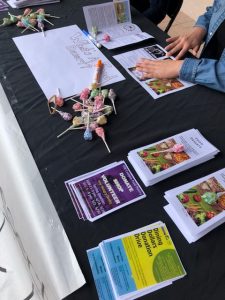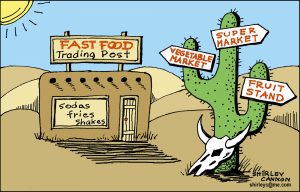Group projects are typically a source of anxiety and apathy in the minds of college students. However, the idea that our group project had the potential to make an impact on the students at UW, the community in Seattle, and discuss the political implications of a global problem was enough. We faced a series of roadblocks, yet we were able to put together a project that both engaged the community while starting conversations about a global issue and political pathways to become involved in a solution.

I’ve been inspired by this in that I now know about political engagement and civic organization, and I can see myself pursuing something along those lines for a future career. I already knew I wanted to go into communications but now I think that I want to do communications for a nonprofit, or a public policy group. It was definitely difficult, but the conversations I had with students and knowing that I educated people about a topic that affects people all over the world made the entire ordeal completely worth it.
Our focus on food deserts came about through what we learned in class about income disparity and food justice. We read a lot about how to battle the rise of unhealthy processed foods, but the answer was almost always individualism, suggesting that individual choices could almost be a substitute for democracy (Pollan). How do you solve these problems and put in farmer’s markets and grocery stores without leading to gentrification and the ultimate pushing out of the communities you’re trying to help in the first place? If it’s all tied up into one interdependent socio-political system, it must be solved as such (Lecture 4/10). The connection between global and local is so important because it allows us to see and understand the problem, but then gives us an incentive to act and help our community. Without action, the “perpetual growth and the cycle of production and consumption” will continue to deny people of affordable, nutritional food (Robbins, 210).

Illustration: Shirley Cannon
One of the best ways to engage an audience and inspire action is to educate on a global issue and then center it in a community close to the audience. The students we engaged with during our tabling session now have the tools to make a positive impact and work towards a global culture of food justice.


Hi Emily,
It is so good to hear that you’re thinking about organizing! I agree that students often think of group projects with anxiety and apathy, put off by the idea of having to coordinate with others. I also think this is the general mood of American individualism, which has been one of the cultural reasons for a decline in civic engagement across American society (Putnam)(Maniates). I think one of the main things we as academics are missing when we criticize capitalism and individualism is the persisting need for real individual action within greater communities. This class of course addresses this and walks the talk, but your project was especially inspiring because you actually went out and started conversations with people about something that is happening here in Seattle and informing them on how they can help. This kind of person-to-person relationship building is what movements are made on! (Also if you are interested in being a field-organizer for a non-profit, I recommend Washington Environmental Council!)
Emily,
I appreciate your analysis of the food desert issue in that at times the steps taken to put healthy food options in neighborhoods drive up property values and push out the people who were lacking the access to food. It seems that one way to combat this would be rate fixed city/government owned housing options in urban areas that have good options for groceries. It also seems that when a movement comes from within a community rather than from the outside it is better at integrating the needs of a community. We have seen this start to play out in the South Central District of Seattle where community members are working to bring farmers markets closer and open up small local businesses. When people living in the area are the ones doing the economic development the hope is that the whole community would benefit from it and more of the people could afford to stay there once rent does rise. As this is typically not the outcome of development, because outside interests move in to “up and coming” areas in order to capitalize a new market, it may be necessary to explore food autonomy in food deserts.
We may be a ways off from food autonomy but it is worth being explored. Urban farms in poorer areas of cities have experimented with this idea but have not been able to get enough yield to make a large impact. Is it possible that with some new technology, such as vertical agriculture, this idea could become more viable? It seems that at the route of food deserts the issue is financial. Corporations only move in to communities once they become economically viable, and once that happens some people can’t afford to live there anymore. Some amount of de-commodification of food is necessary to solve this issue. If cities were to treat healthy food as a basic human right, more energy towards accessible food could make some big changes. As you pointed out we can not only rely on business moving in to a community, there must be an aspect of community and government involvement to ensure that the population who needs the food gets it at affordable prices. Another solution that comes to mind is the type of government subsidized farmers markets that Brazil is experimenting with in their anti hunger initiative. As the video showed in class these farmers markets on city property were great for both the organic farmers because they had a rent free place to sell their product, and the citizens because they got discounted produce. The government can decide what to subsidize and it is time to switch from corporate corn and beef to fresh foods for low income areas.
Thanks for starting the discussion!